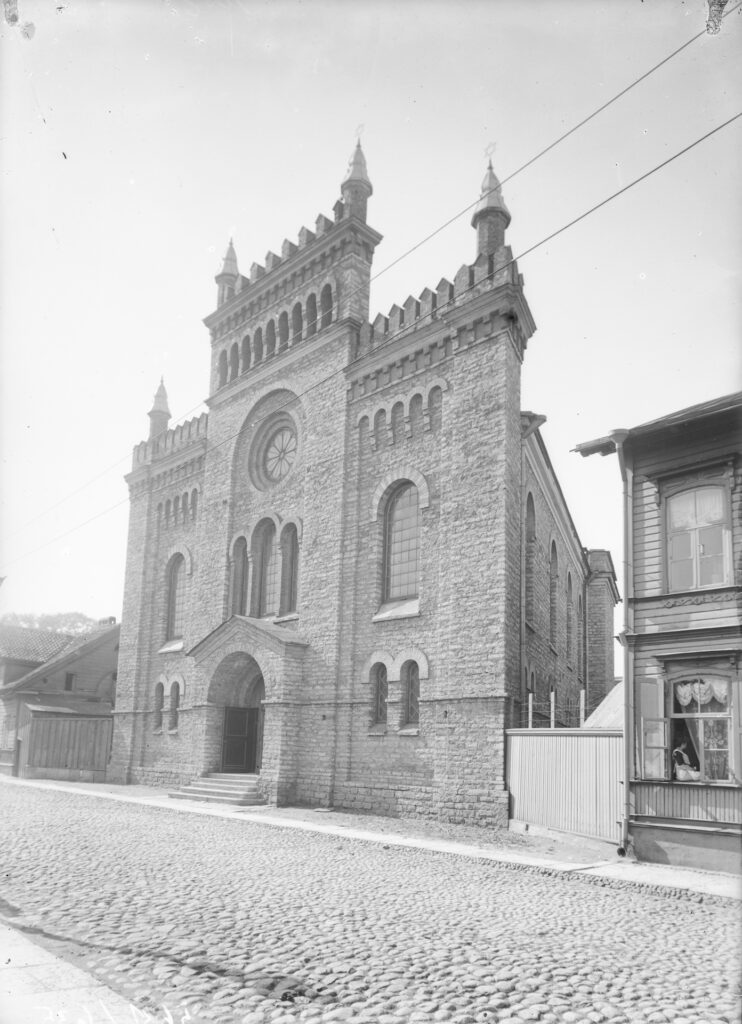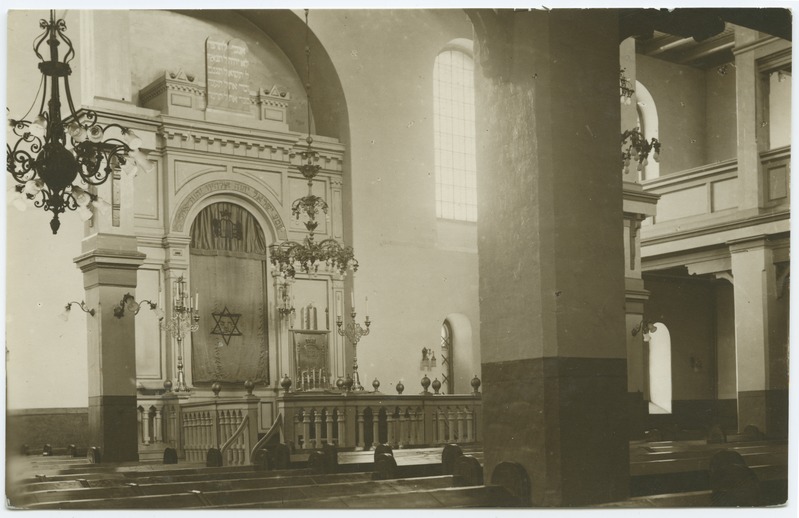The Jewish community in Estonia emerged relatively recently compared to most European countries. Jews began to settle in Estonia in mid-19th century, while Estonia was under the rule of the Russian Empire. In time, they formed a community of approximately 4000 people.
In 1918, Estonia gained independence, which opened up better opportunities for the Jews to organise their cultural and social life. The Republic of Estonia recognised the Jewish community as an ethnic minority, which enabled them to declare Jewish Cultural Autonomy in 1926 and elect a cultural self-government. The Jews had tight social and cultural connections with the local German and Russian communities.


Approximately 4500 Jews (0,4% of the population) lived in Estonia before the outbreak of the Second World War. Most of them lived in the capital Tallinn, and other larger towns (Tartu, Pärnu, Narva). This was due to the social composition of the community, as it mainly consisted of people with higher education, businessmen or people engaged in artisanal industry. There were very few farmers and labourers among the Jews. Further information can be found here: https://museum.jewish.ee/
Antisemitism spread in several parts of Europe before the Second World War. In Estonia, there was no antisemitism on a state level. Instead, Estonia received small numbers of Jews that had escaped from antisemitism in Germany. As a consequence of the expansion of the sionist movement, approximately 500 younger Jews emigrated to Palestine in the late 1930s.
The Soviet Union annexed Estonia in the summer of 1940. Repressions of persons that were politically and socially undesirable in the eyes of the Soviet Union soon followed. These repressions hit the affluent Jewish residents on a major scale. By the time the Soviet Union and Germany entered into war on 21 June 1941, at least 419 local Jews (approximately 10% of the community) had been arrested and deported as a result of Soviet repressions, mostly on 14 and 15 June 1941. However, a number of Jews had gone into the service of the Soviet occupying regime. The following German occupying regime used this in their local anti-Jewish propaganda.
The breakout of the war between Germany and USSR, and the rapid approach of the front line to Estonia put the local Jews in a position of having to make a choice: whether to attempt to evacuate to the USSR to avoid the front, or to remain in German occupied Estonia. The Soviet regime did not organise the evacuation of Jews as an ethnic group. Communists, employees of Soviet institutions, etc were evacuated instead. In order to evacuate on their own initiative, Jews had to get permission from the authorities and find transportation. Some, who would have liked to evacuate, did not have time or opportunity to do so. Others knowingly remained in Estonia, as they were frightened by the Soviet repressions that preceded the German occupation. Approximately 2,000–2,500 Jews evacuated to the USSR, and about 1,000 local Jews remained in Estonia when the German occupation began.